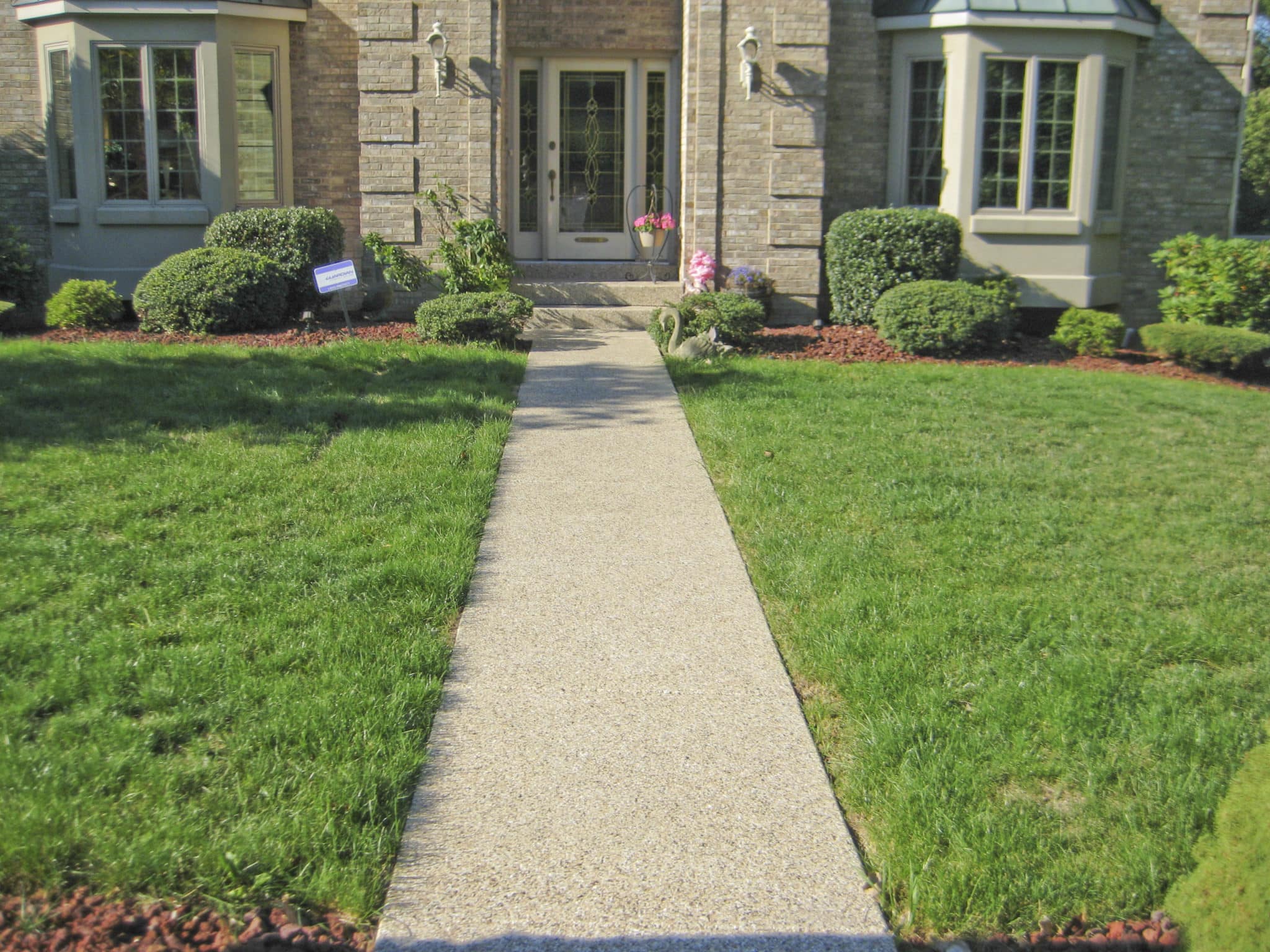What is the Best Concrete Coating for Driveways and Sidewalks?
June 25th, 2024 | 3 min. read

Have you ever looked at your driveway or sidewalk and thought, "Why does it look so worn out so quickly?" You're not alone. Many homeowners share your frustration, especially those in regions with harsh climates, where the relentless sun or freezing temperatures wreak havoc on concrete surfaces.
At Floor Shield, we understand the disappointment of seeing cracks and bubbles marring what was once a smooth and pristine concrete surface. Whether you're dealing with bubbling, cracking, or simply the rapid aging of your driveway, this article is crafted for you. We'll walk you through the best solutions to protect your investment and keep your concrete looking new longer.
Understanding Driveway and Sidewalk Concrete
Driveways and sidewalks are exposed to the elements and everyday wear and tear, making them prone to issues like excess moisture and air movement under the pads. This can lead to unsightly bubbling and cracking during cold snaps, which is not just an eyesore but can also decrease the lifespan of your concrete.
The Impact of Weather on Driveway and Sidewalk Concrete
In colder regions, the freeze-thaw cycle can be concrete's worst enemy. Moisture seeps into the concrete, freezes, expands, and eventually causes the material to crack and break apart. Conversely, in sunnier locales, UV radiation can age concrete prematurely, leading to fading and weakening.
Why Use a Primer on Concrete?
To combat these issues, starting with a robust primer is key. At Floor Shield, we use an epoxy primer that deeply penetrates and hardens the top layer of concrete. This initial step ensures better adhesion of subsequent coatings and significantly enhances durability, especially in moisture-rich environments.
The Best Concrete Coatings: Polyaspartic vs. Other Materials
When it comes to choosing the right coating, polyaspartic coatings stand out from the crowd. While materials like urethane might offer some resistance against UV light and wear, they lack the comprehensive durability that polyaspartics provide. Polyaspartic coatings not only resist UV damage but also do not amber or fade under sunlight, maintaining their aesthetic appeal and protective properties over time.
The Advantages of Polyaspartic Coatings for Driveways and Sidewalks
- Longevity: Guaranteed to last up to 15 years.
- Protection: Superior resistance to weathering, chemicals, and UV damage.
- Aesthetic: Maintains its color and finish without yellowing.
Alternative Solutions: When to Consider Concrete Sealers
If you're not ready to commit to a full coating system, a concrete sealer might be an adequate temporary solution. Sealers can prevent water absorption and protect against the freeze-thaw cycle. However, they require frequent reapplication, making them less cost-effective in the long run.
Why You Should Avoid Latex Paint for Concrete
Latex paint might seem like a quick fix for sprucing up your concrete, but it offers no real protection. It wears off quickly and fails to shield the concrete from any environmental damage, resulting in more frequent and costly maintenance.
Installation Process: How to Apply Concrete Coatings Correctly
Proper application is crucial for maximizing the effectiveness of concrete coatings. The process typically involves cleaning the concrete surface, applying a primer, adding a color coat, and finishing with a clear polyaspartic topcoat. Each step is critical to ensure the coating adheres well and provides lasting protection.
FAQs: Common Questions About Concrete Coatings Answered
- How long does it take to apply concrete coatings?
- At Floor Shield, the application process for concrete coatings can take as little as a day. However, if high moisture is detected, this usually means that one extra day is necessary. On the first day, the concrete is prepared—this involves cleaning, repairing any cracks, and applying the primer. The second day is for applying the base coat and topcoat.
- Since our 100% polyaspartic coating can fully dry within 6-8 hours, you can get an installment completed in as little as one day.
- Can I apply coatings myself, or should I hire a professional?
- While it is possible for a DIY-savvy homeowner to apply concrete coatings, it is strongly recommended to hire a professional. Professional installers like those at Floor Shield are trained to handle the materials correctly and have the necessary equipment to prepare the surface adequately, ensuring the longevity and performance of the coating.
- What maintenance is required for polyaspartic coatings?
- Polyaspartic coatings are relatively low maintenance. To keep your coated surfaces looking their best, regular cleaning with a mild soap and water is recommended. Avoid using abrasive cleaners or tools that could scratch the surface. It's also a good idea to periodically check for any chips or wear, especially in high-traffic areas, to address any issues before they become significant problems.
Conclusion
Choosing the right coating for your driveway or sidewalk can significantly extend its life and enhance its appearance. While Floor Shield’s polyaspartic coatings offer excellent durability and aesthetic benefits, we understand they may not be the right choice for everyone. If you're looking for a less permanent solution or have minimal weather-related concerns, other options like concrete sealers might be more suitable. Whatever your choice, protecting your concrete is crucial for maintaining the value and appearance of your property.
If you’re interested in a Floor Shield concrete coating, you can get a free, no-obligation quote by filling out the form below.
